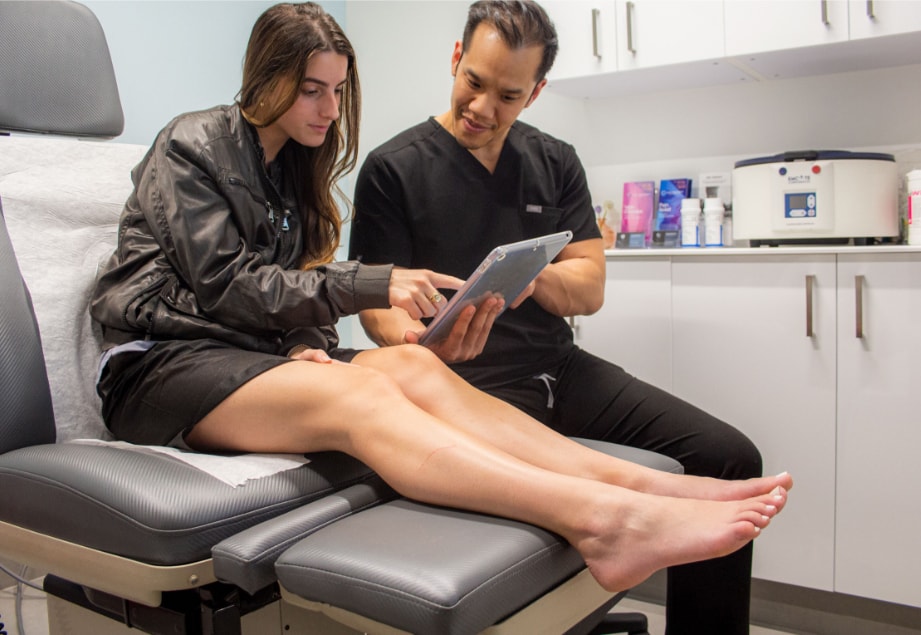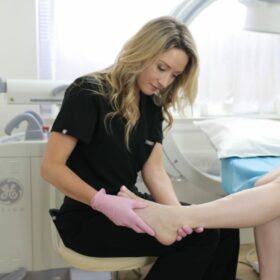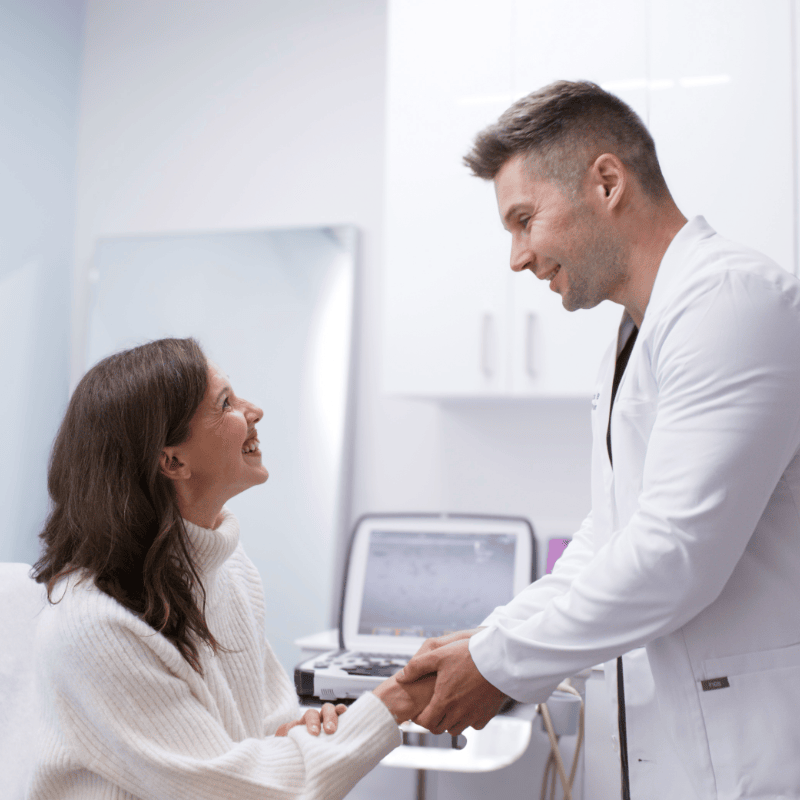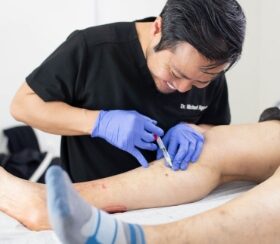Have you been considering varicose vein surgery to relieve the discomfort and unsightly appearance of spider veins and varicose veins veins? It’s important to understand the potential side effects and weigh them against the benefits. In this article, we’ll explore the various side effects of traditional varicose vein surgery and why minimally invasive treatments may be a better option for you.
Vein Treatment Clinic is a leading group of vein centers led by board-certified vein doctors in the US. We have state-of-the-art offices in New York, New Jersey, Long Island, California, and Washington DC, all dedicated to helping you achieve optimal vascular health. Our vein doctors only offer personalized, minimally invasive spider vein and varicose vein treatments that conclude within an hour and involve no downtime.
Please schedule an appointment at your nearest vein treatment clinic today. If you’re in California, we recommend visiting our vein center in La Jolla, a charming neighborhood on the outskirts of San Diego.
What Are Varicose Veins?
Varicose veins are swollen, twisted veins that you can see just above the surface of your skin. They are caused by weakened valves and veins in your legs, leading to poor blood flow and an accumulation of blood in your veins. This can cause discomfort, aching, cramping, and swelling in your legs. Over time, as blood continues accumulating in your leg veins because of damaged vein valves, the varicose veins may also dilate and become bigger, eventually looking like a knotted and twisted mass of blood vessels.
Traditional Varicose Vein Surgery: Side Effects
- Pain and Discomfort: Traditional varicose vein surgery, also known as vein stripping, involves making an incision near the affected vein and removing it. This can be a painful procedure, and you may experience discomfort and pain for several days after surgery.
- Scarring: The incision made during traditional varicose vein surgery can leave a noticeable scar, which can be unsightly and take several months to fade.
- Bruising: Bruising is a common side effect of traditional varicose vein surgery. The bruises may last for several weeks, and they can be uncomfortable and unsightly.
- Swelling: Swelling is another common side effect of traditional varicose vein surgery. This swelling can be painful and may last for several weeks.
- Blood Clots: Blood clots can occur after traditional varicose vein surgery. These clots can be dangerous and may require medical treatment.
Minimally Invasive Treatments: A Better Option
Given the potential side effects of traditional varicose vein surgery, you may want to consider minimally invasive treatments instead. These treatments are performed using small incisions or needles, and they offer several benefits, including:
- Reduced Pain and Discomfort: Minimally invasive treatments are less painful than traditional varicose vein surgery and typically cause less discomfort.
- No Scarring: Because minimally invasive treatments use small incisions or needles, there is no visible scarring.
- Reduced Bruising: Minimally invasive treatments typically cause less bruising than traditional varicose vein surgery.
- Reduced Swelling: Minimally invasive treatments also typically cause less swelling than traditional varicose vein surgery.
- Lower Risk of Blood Clots: The risk of blood clots is lower with minimally invasive treatments compared to traditional varicose vein surgery.
Minimally Invasive Varicose Vein Treatments: Types
Minimally invasive treatments are a great alternative to traditional varicose vein surgery as they offer fewer side effects and are less invasive. There are three main types of minimally invasive treatments for varicose veins, including Endovenous Laser Therapy (EVLT), Radiofrequency Closure, and Sclerotherapy. Let’s take a closer look at each of these treatments:
- Endovenous Laser Therapy (EVLT): This is a minimally invasive treatment that uses laser energy to close the affected vein and redirect blood flow to healthy veins. During the procedure, a small laser fiber is inserted into the affected vein through a small incision in your leg. The laser energy heats up the wall of the vein, causing it to close and collapse. Over time, the vein will be naturally absorbed by your body and disappear. EVLT is a quick and effective treatment that usually takes less than an hour and requires little to no downtime.
- Radiofrequency Closure: This treatment uses radiofrequency energy to close the affected vein and redirect blood flow to healthy veins. A small catheter is inserted into the affected vein, and radiofrequency energy is delivered to the vein wall, causing it to close and collapse. The procedure takes about 30 minutes to an hour and is usually performed under local anesthesia. You can return to your normal activities immediately after the procedure.
- Sclerotherapy: This treatment involves injecting a solution into the affected spider vein to close it and redirect blood flow to healthy veins. The solution causes the vein to scar and collapse, and eventually, it will be absorbed by your body. Sclerotherapy is a minimally invasive procedure that takes about 30 minutes to an hour and does not require any downtime. The solution used during sclerotherapy is safe and effective, and there is little to no discomfort during the procedure.
What Happens if Varicose Veins are Left Untreated?
Varicose veins are a common condition that affects millions of people worldwide, but if left untreated, they can lead to more serious health problems. Some of the potential complications of untreated varicose veins include:
- Pain and Discomfort: Varicose veins can cause aching, burning, and itching in your legs. Over time, the pain can become more severe and may interfere with your daily activities.
- Skin Changes: Varicose veins can cause skin changes, such as redness, darkening, and thickening. In some cases, open sores or ulcers can develop, increasing the risk of infection.
- Blood Clots: Varicose veins can increase your risk of developing blood clots, which can be life-threatening if they break free and travel to your lungs or brain.
- Swelling: Varicose veins can cause swelling in your legs, which can be painful and make it difficult to walk or stand for long periods.
- Phlebitis: Varicose veins can cause inflammation in the affected veins, leading to a condition known as phlebitis. This can cause pain, swelling, and redness in your legs.
- Venous Ulcers: In severe cases, varicose veins can lead to the development of venous ulcers, which are painful open sores that can take months or even years to heal.












